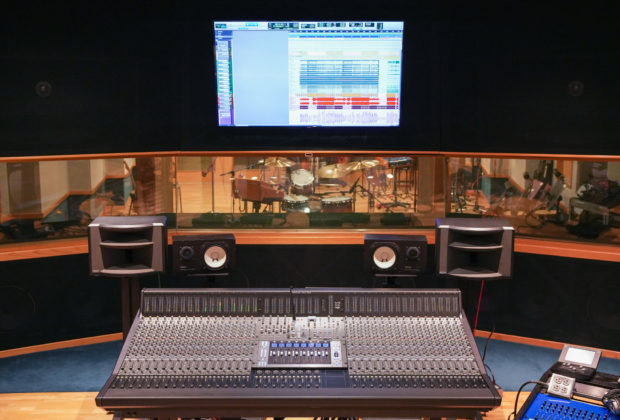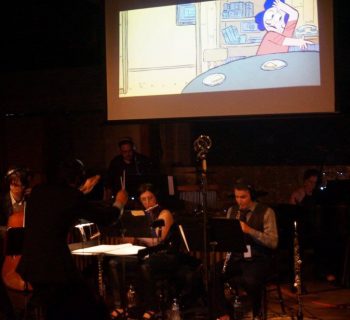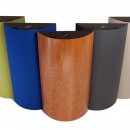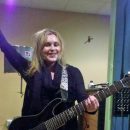Belmont University's Mike Curb College of Entertainment & Music Business has installed two Solid State Logic ORIGIN 32-channel analogue mixing consoles for use on the school’s Audio Engineering Technology program. One SSL ORIGIN console has been installed in the Robert E. Mulloy Student Studios on Belmont’s main campus and the other at Ocean Way Nashville Recording Studios.
Studio A in the Robert E. Mulloy (REM) Studios and Studio B at Ocean Way Nashville both previously housed aging large-format analog desks from another manufacturer. “We had been needing to replace the consoles for a while,” says instructor Michael Janas, the Chair of Audio Engineering Technology (AET). While considering replacement console options during the refurbishment of REM’s Studio A in 2019, he recalls, “The ORIGIN was released, and I thought it looked interesting — and the value proposition looked really interesting!”
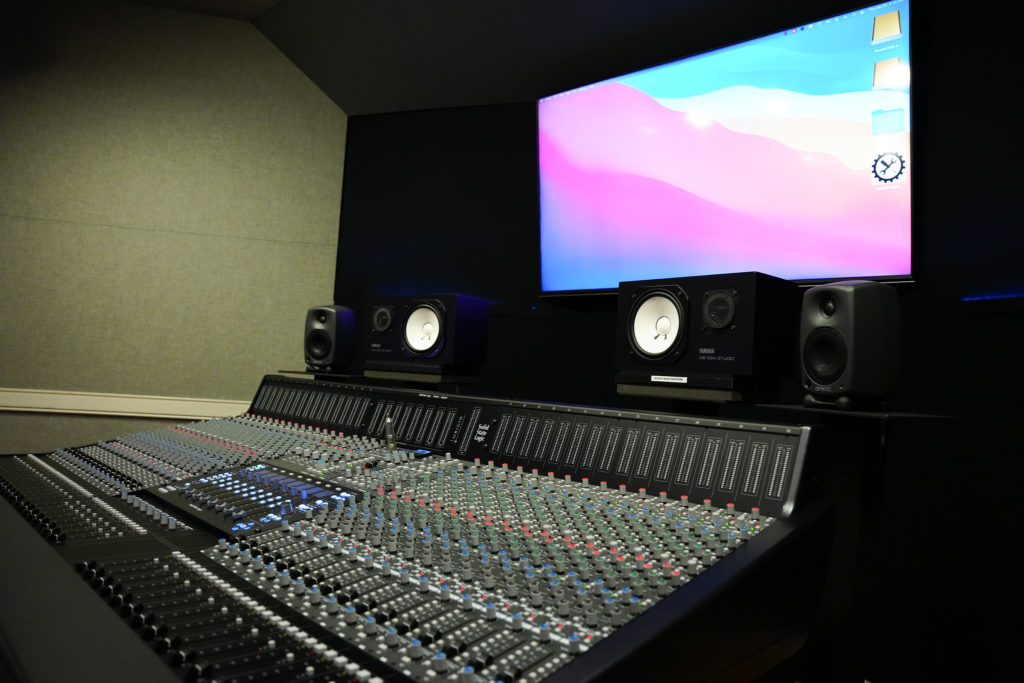
Robert E. Mulloy Studios at Belmont University in Nashville, Tennessee, January 20, 2022.
The perfect teaching platform
Fortuitously, the display console from the 2019 AES Show ORIGIN launch ended up at the Nashville office of Vintage King Audio, one of SSL’s sales partners. “I went over there and got on the console,” says Janas, who has taught his class on six different desks over the years. “I brought up some tracks through it, listened and thought, for the size, for the layout and the sound, and how things are presented, it makes perfect sense to teach these classes on it.” While at Vintage King, Janas also recorded a variety of sources through the ORIGIN’s PureDrive™ microphone preamps, which can add warmth harmonically rich character to a signal. He was impressed with the results, he says.
Although access to the recently installed desk at REM Studios has been limited by Belmont’s COVID-19 precautions, Janas did have an opportunity to check out ORIGIN’s audio quality, he says, while preparing for the imminent return to in-person tuition. “I spent four or five hours working on it, taking stuff I do on the curriculum and applying it to the ORIGIN. Listening to a cue mix, for example, was not only very easy to do, it was also noticeably really punchy — much better sounding than the console we had in the room previously.”
Ocean Way Nashville finds its ORIGIN — with room to spare
Ocean Way Nashville, which Belmont University acquired in 2001, houses three rooms that are available for a mix of commercial and academic use. The new SSL console in Studio B has replaced an 11-foot-wide, 96-input vintage console. Because the ORIGIN is just six feet wide, says Patrick McMakin, the facility’s Director of Operations, “We have all this extra space so we can put chairs in there for students. So it worked out well.” Studio B will be dedicated to Belmont’s AET program for the 2022 calendar year, he says, and will probably become available for commercial bookings again the following year.
A couple of Ocean Way Nashville’s staff engineers have given the ORIGIN desk a workout on sessions prior to the new academic year starting, McMakin reports: “So far, I’m hearing great feedback. There’s a tendency to try and make this console do everything in the same way that the old console did, so we’re learning that new workflows are going to apply.”
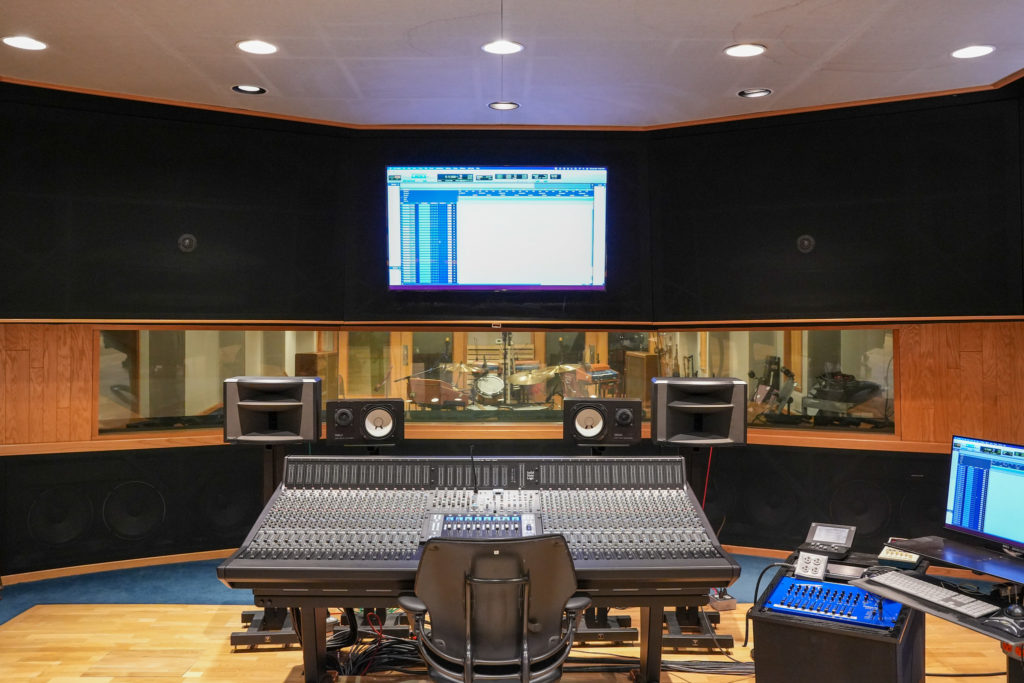
New Sound Board in Ocean Way Studio B at Belmont University in Nashville, Tennessee, January 28, 2022.
One knob per function
Those workflows can be much more streamlined on the ORIGIN compared to the AET program’s previous desks, Janas says, which included some complex routing options. When introducing ORIGIN’s operation and workflow to some of his students off-campus recently, he says, “They were asking, ‘Where’s the routing matrix?’ I said, there’s that button and that button,” referring to the ORIGIN’s multitrack bus assignment system. On ORIGIN, any input may be easily assigned to a bus simply by pressing a bus master switch followed by the input channel’s Route switch. “And, you don’t have to do all those things you used to just to get a cue feed,” Janas adds. “It’s very straightforward and easy to use.”
Janas and his students are also looking forward to getting familiar with a different metering scheme on the ORIGIN. “We’re used to seeing peak or VU and something that is post fader on the channel.” On the old console, he says, “If you brought a microphone in, you would switch the meters to look at the channel output, push the fader up and see how much level you had. ORIGIN is interesting in that the channel meter comes directly after the channel input, so it’s metering what’s coming in, as opposed to what’s going out. It’s a different workflow, but it’s nice to have a meter that’s not a channel solo where you can see that.”
The ORIGIN in REM’s Studio A replaced a 48-input desk with onboard patchbay that filled the control room wall to wall, he also reports. “One thing that’s nice with the SSL console only being about six feet wide is that now we’ve got Sound Construction Lowboy equipment racks on either side of it. The mic pre’s and compressors, things that you want to grab quickly, especially in a tracking session, are right there close to you. Plus, we were able to mount the controls for the Lexicon reverbs and things like that on top of the racks.”
For more information about our award-winning products, visit: solidstatelogic.com

